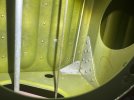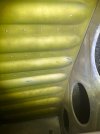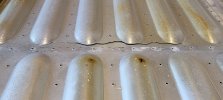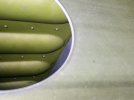Just what is the “ AD” that some folks are talking about here?
...
A very informative looking (I am not qualified to judge) post. Your sub-editor has removed what appear to be many extraneous blank lines which spoiled the flow for this reader.
Magman said:-
"Just what is the “ AD” that some folks are talking about here?
Airworthiness Directives have very specific methods of inspecting the area of concern. Visual, 10x glass , dye penetrant, ultrasound etc are called out in the AD. There may be Repair Tolerances and Frequency of Inspection specified in the document also. The AD may refer to a Mfg Service Bulletin but the afore mentioned Methods and Frequency will often be different.
The pix from OP do not appear to show cracks . #6 does show real cracks.
I have some skins here that have multiple cracks which seems the norm with these. IIRC Piper wings are not constructed symmetrical. The Left Wing has some skins that are thinner than the Right Wing. It would become a major concern if the outer skin actually displayed cracking. Removing the wing for a possible crack or an indication that it may crack in the future is not warranted. Note that is in this area only.
IMHO the OP should NOT AUTHORIZE the Inspecting Agency to make the repair. Suggested course of events:
1. Have the IA or Repair Station complete the Annual Inspection and furnish a list of all discrepancies with an approximate cost to address each.
2. The facility can make the appropriate Record Entries for work accomplished. This is essentially saying the aircraft is Airworthy except for the items noted.
3. At this point any properly certificated person can address the listed discrepancies and the aircraft is then Airworthy. OP can have anyone he chooses do this. It does not mean the repair has to be done in a manner specified the folks that did the initial inspection.
Terms such as “ as per “ and “I/a/w” are often used in aircraft maintenance. What is the Inspecting Agency using for guidance in conducting the inspection and the projected repair? I know of no Airworthiness Directive that mandates the inspection as is being conducted.
A DER can deter other repair strategies or determine there is no action needed at this time. Cessna Manuals are much more detailed in detailing things like allowable and repairable damage. Piper is sorely lacking in this department.
Removing and reinstalling a Cherokee wing is not a task to be taken lightly."
A AD circa ‘80’s that specified wing removal was rescinded as the process was determined to be likely to cause more significant damage.









